Integrated Photogrammetric-Acoustic Technique for Qualitative Analysis of the Performance of Acoustic Screens in Sandy Soils
Abstract
1. Introduction
2. Theoretical Basis
2.1. Photogrammetry
2.2. Acoustics
3. Materials and Methods
3.1. Scaled Wind Tunnel
3.2. Sand
3.3. Fan and Air Diffuser
3.4. Acoustic Screens Tested: Classical and Sonic Crystal Acoustic Screens
3.5. Acoustic Measurements Equipment
3.6. Photogrammetric Measurements Equipment
4. Results
4.1. Photogrammetric Results
4.2. Acoustic Results
5. Conclusions
Author Contributions
Conflicts of Interest
References
- EC Directive. Directive 2002/49/EC of the European Parliament and of the Council of 25 June 2002 Relating to the Assessment and Management of Environmental Noise; Communities L 189 (2002); Official J. Eur.: Brussels, Belgium, 2002. [Google Scholar]
- Department of Transportation, Federal Highway Administration USA. Keeping the Noise Down, Highway Traffic Noise Barriers; Federal Highway Administration USA: Washington, DC, USA, 2001. Available online: https://www.fhwa.dot.gov/environment/noise/noise_barriers/design_construction/keepdown.cfm (accessed on 2 September 2019).
- Castiñeira-Ibañez, S.; Rubio, C.; Sánchez-Pérez, J.V. Environmental noise control during its transmission phase to protect buildings. Design model for acoustic barriers based on arrays of isolated scatterers. Build. Environ. 2015, 93, 179–185. [Google Scholar] [CrossRef]
- Fredianelli, L.; Del Pizzo, A.; Licitra, G. Recent Developments in Sonic Crystals as Barriers for Road Traffic Noise Mitigation. Environments 2019, 6, 14. [Google Scholar] [CrossRef]
- Martínez-Sala, R.; Sancho, J.; Sánchez-Pérez, J.V.; Gómez, V.; Llinares, J.; Meseguer, F. Sound attenuation by sculpture. Nature 1995, 378, 241. [Google Scholar] [CrossRef]
- Morandi, F.; Miniaci, M.; Marzani, A.; Barbaresi, L.; Garai, M. Standardised acoustic characterisation of sonic crystals noise barriers: Sound insulation and reflection properties. Appl. Acoust. 2016, 114, 294–306. [Google Scholar] [CrossRef]
- Castiñeira-Ibañez, S.; Rubio, C.; Romero-Garcia, V.; Sánchez-Pérez, J.V.; García-Raffi, L.M. Design, Manufacture and Characterization of an Acoustic Barrier Made of Multi-Phenomena Cylindrical Scatterers Arranged in a Fractal-Based Geometry. Arch. Acoust. 2012, 37, 455–462. [Google Scholar] [CrossRef]
- Castiñeira-Ibáñez, S.; Romero-García, V.; Sánchez-Pérez, J.V.; García-Raffi, L.M. Periodic systems as road traffic noise reducing devices: prototype and standardization. Environ. Eng. Manag. J. 2015, 14, 2759–2769. [Google Scholar] [CrossRef]
- Wang, Y.F.; Wang, Y.S.; Laude, V. Wave propagation in two-dimensional viscoelastic metamaterials. Phys. Rev. B 2015, 92, 104110. [Google Scholar] [CrossRef]
- Wang, Y.F.; Liang, J.W.; Chen, A.L.; Wang, Y.S.; Laude, V. Wave propagation in one-dimensional fluid-saturated porous metamaterials. Phys. Rev. B 2019, 99, 134304. [Google Scholar] [CrossRef]
- Valkenburg, R.J.; Mcivor, A.M. Accurate 3D measurement using a structured light system. Image Vis. Comput. 1998, 16, 99–110. [Google Scholar] [CrossRef]
- Hui, Z.; Liyan, Z.; Hongtao, W.; Jianfu, C. Surface measurement based on instantaneous random illumination. Chin. J. Aeronaut. 2008, 22, 316–324. [Google Scholar] [CrossRef]
- McPherron, S.P.; Gernat, T.; Hublin, J.J. Structured light scanning for high-resolution documentation of in situ archaeological finds. J. Archaeol. Sci. 2009, 36, 19–24. [Google Scholar] [CrossRef]
- Bruno, F.; Bianco, G.; Muzzupappa, M.; Barone, S.; Razionale, A.V. Experimentation of structured light and stereo vision for underwater 3D reconstruction. ISPRS J. Photogramm. 2011, 66, 508–518. [Google Scholar] [CrossRef]
- Bertani, D.; Cetica, M.; Melozzi, M.; Pezzati, L. High-Resolution optical topography applied to ancient painting diagnostics. Opt. Eng. 1995, 34, 1219–1225. [Google Scholar] [CrossRef]
- Buchón-Moragues, F.; Bravo, J.M.; Ferri, M.; Redondo, J.; Sánchez-Pérez, J.V. Application of structured light system technique for authentication of wooden panel paintings. Sensors 2016, 16, 881. [Google Scholar] [CrossRef] [PubMed]
- Arias, P.; Herraez, J.; Lorenzo, H.; Ordoñez, C. Control of structural problems in cultural heritage monuments using close-range photogrammetry and computer methods. Comput. Struct. 2005, 83, 1754–1766. [Google Scholar] [CrossRef]
- Rocchini, C.; Cignoni, P.; Montani, C.; Pingi, C.; Scopigno, R.A. Low cost 3D scanner based on structured light. Comput. Graph. Forum 2002, 20, 299–308. [Google Scholar] [CrossRef]
- Bianchi, M.G.; Casula, G.; Cuccuru, F.; Fais, S.; Ligas, P.; Ferrara, C. Three-dimensional imaging from laser scanner, photogrammetric and acoustic non-destructive techniques in the characterization of stone building materials. Adv. Geosci. 2018, 45, 57–62. [Google Scholar] [CrossRef]
- Mattei, G.; Troisi, S.; Aucelli, P.P.C.; Pappone, G.; Peluso, F.; Stefanile, M. Multiscale reconstruction of natural and archaeological underwater landscape by optical and acoustic sensors. In Proceedings of the 2018 IEEE International Workshop on Metrology for the Sea, Bari, Italy, 8–10 October 2018; Learning to Measure Sea Health Parameters (MetroSea): Bari, Italy; pp. 46–49. [Google Scholar]
- Alvarez, L.V.; Moreno, H.A.; Segales, A.R.; Pham, T.G.; Pillar-Little, E.A.; Chilson, P.B. Merging Unmanned Aerial Systems (UAS) Imagery and Echo Soundings with an Adaptive Sampling Technique for Bathymetric Surveys. Remote Sens. 2018, 10, 1362. [Google Scholar] [CrossRef]
- Miller, B.S.; Wotherspoon, S.; Rankin, S.; Calderan, S.; Leaper, R.; Keating, J.L. Estimating drift of directional sonobuoys from acoustic bearings. J. Acoust. Soc. Am. 2018, 143, 25–30. [Google Scholar] [CrossRef] [PubMed]
- Shortis, M.R.; Robson, S.; Jones, T.W.; Goad, W.K.; Lunsford, C.B. Photogrammetric tracking of aerodynamic surfaces and aerospace models at nasa langley research center. In Proceedings of the ISPRS Annals of the Photogrammetry, Remote Sensing and Spatial Information Sciences, Volume III-5, 2016 XXIII ISPRS Congress, Prague, Czech, 12–19 July 2016; pp. 27–34. [Google Scholar]
- Moisan, E.; Heinkele, C.; Charbonnier, P.; Foucher, P.; Grussenmeyer, P.; Guillemin, S.; Koehl, M. Dynamic 3d modeling of a canal-tunnel using photogrammetric and bathymetric data. In Proceedings of the 2017 3D Virtual Reconstruction and Visualization of Complex Architectures, Nafplio, Greece, 1–3 March 2017. [Google Scholar]
- Zhang, D.; Li, S.; Bai, X.; Yang, Y.; Chu, Y. Experimental Study on Mechanical Properties, Energy Dissipation Characteristics and Acoustic Emission Parameters of Compression Failure of Sandstone Specimens Containing En Echelon Flaws. Appl. Sci. 2019, 9, 596. [Google Scholar] [CrossRef]
- Kraus, K. Photogrammetry: Geometry from Images and Laser Scans, 2nd ed.; Walter de Gruyter: Berlin, Germany, 2000; Volume 1, pp. 4–27. [Google Scholar]
- Bhalerao, R.H.; Gedam, S.S.; Almansa, A. Fast epipolar resampling of trinocular linear scanners images using Chandrayaan-1 TMC dataset. In Proceedings of the 2013 IEEE Second International Conference on Image Information Processing (ICIIP-2013), Shimla, India, 9–11 December 2013; pp. 12–16. [Google Scholar]
- Hartley, R.I.; Schaffalitzky, F. Reconstruction from projections using grassmann tensors. IJCV 2009, 83, 274–293. [Google Scholar] [CrossRef]
- Rodríguez López, A.L. Algebraic Epipolar Constraints for Efficient Structureless Multiview Motion Estimation. Ph.D. Thesis, Faculty of Informatics, University of Murcia, February 2013. [Google Scholar]
- Ahmadabadian, A.H.; Robson, S.; Boehm, J.; Shortis, M.; Wenzel, K.; Fritsch, D. A comparison of dense matching algorithms for scaled surface reconstruction using stereo camera rigs. PRS 2013, 78, 157–167. [Google Scholar] [CrossRef]
- Goesele, M.; Snavely, N.; Curless, B.; Hoppe, H.; Seitz, S.M. Multi-view stereo for community photo collections. In Proceedings of the 2007 IEEE 11th International Conference on Computer Vision, Janeiro, Brazil, 14–20 October 2007; pp. 1–8. [Google Scholar]
- Harvey, E.S.; Shortis, M.R. Calibration stability of an underwater stereo-video system: implications for measurement accuracy and precision. MTS 1998, 32, 3–17. [Google Scholar]
- Babbar, G.; Bajaj, P.; Chawla, A.; Gogna, M. Comparative study of image matching algorithms. IJITKM 2010, 2, 337–339. [Google Scholar]
- Triggs, B.; McLauchlan, P.F.; Hartley, R.I.; Fitzgibbon, A.W. Bundle adjustment a modern synthesis. In International Workshop on Vision Algorithms; Springer: Berlin/Heidelberg, Germany, 1999; pp. 298–372. [Google Scholar]
- Olague, G.; Dunn, E. Development of a practical photogrammetric network design using evolutionary computing. Photogramm. Rec. 2007, 22, 22–38. [Google Scholar] [CrossRef]
- Hirschmuller, H. Stereo processing by semiglobal matching and mutual information. IEEE T Pattern Anal. 2007, 30, 328–341. [Google Scholar] [CrossRef] [PubMed]
- Salomon, D. Bezier aproximation. In Curves and Surfaces for Computer Graphics; Springer Science & Business Media: Northridge, CA, USA, 2007; pp. 175–250. [Google Scholar]
- Öhrn, K. Different Mapping Techniques for Realistic Surfaces. Ph.D. Thesis, University of Gävle, Gavle, Sweden, June 2008. [Google Scholar]
- Farina, A. Simultaneous measurement of impulse response and distortion with a swept-sine technique. In Proceedings of the Audio Engineering Society Convention 108, Paris, France, 19–22 February 2000; p. 5093. [Google Scholar]
- Chen, Y.; Lifeng, W. Periodic co-continuous acoustic metamaterials with overlapping locally resonant and Bragg band gaps. Appl. Phys. Lett. 2014, 105, 191907. [Google Scholar] [CrossRef]
- Kaina, N.; Causier, A.; Bourlier, Y.; Fink, M.; Berthelot, T.; Lerosey, G. Slow waves in locally resonant metamaterials line defect waveguides. Sci. Rep. 2017, 7, 15105. [Google Scholar] [CrossRef] [PubMed]
- Cummer, S.A.; Christensen, J.; Alù, A. Controlling sound with acoustic metamaterials. Nat. Rev. Mater. 2016, 1, 16001. [Google Scholar] [CrossRef]
- Sigalas, M.M.; Economou, E.N. Elastic and acoustic wave band structure. J. Sound Vib. 1992, 158, 377. [Google Scholar] [CrossRef]
- Sánchez-Pérez, J.V.; Caballero, D.; Martínez-Sala, R.; Rubio, C.; Sánchez-Dehesa, J.; Meseguer, F.; Llinares, J.; Gálvez, F. Sound Attenuation by a Two-Dimensional Array of Rigid Cylinders. Phys. Rev. Lett. 1998, 80, 5325. [Google Scholar] [CrossRef]
- Sánchez-Pérez, J.V.; Rubio, C.; Martinez-Sala, R.; Sanchez-Grandia, R.; Gomez, V. Acoustic barriers based on periodic arrays of scatterers. Appl. Phys. Lett. 2002, 81, 5240. [Google Scholar] [CrossRef]
- European Committee for Standardisation, EN 1793-3 (1997). Road Traffic Noise Reducing Devices—Test Method for Determining the Acoustic Performance—Part 3: Normalised Traffic Noise Spectrum; CEN: Brussels, Belgium, 1997. [Google Scholar]
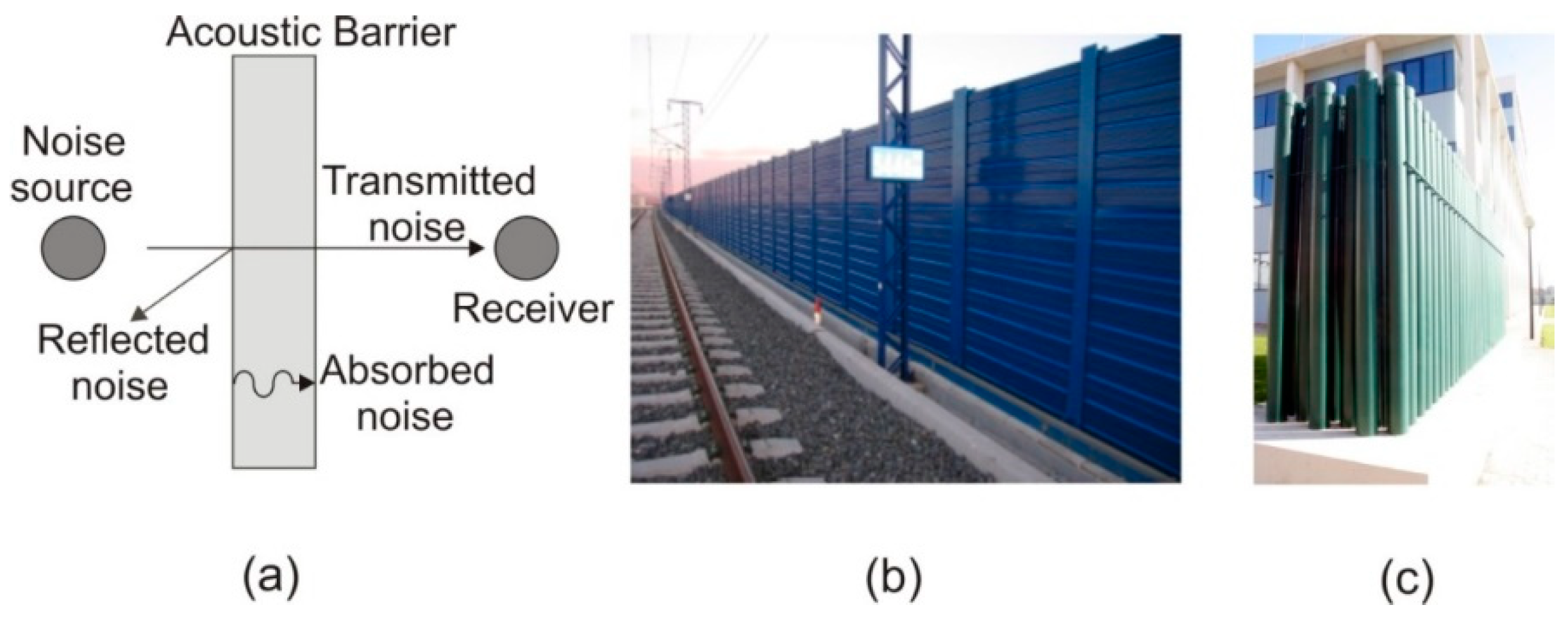
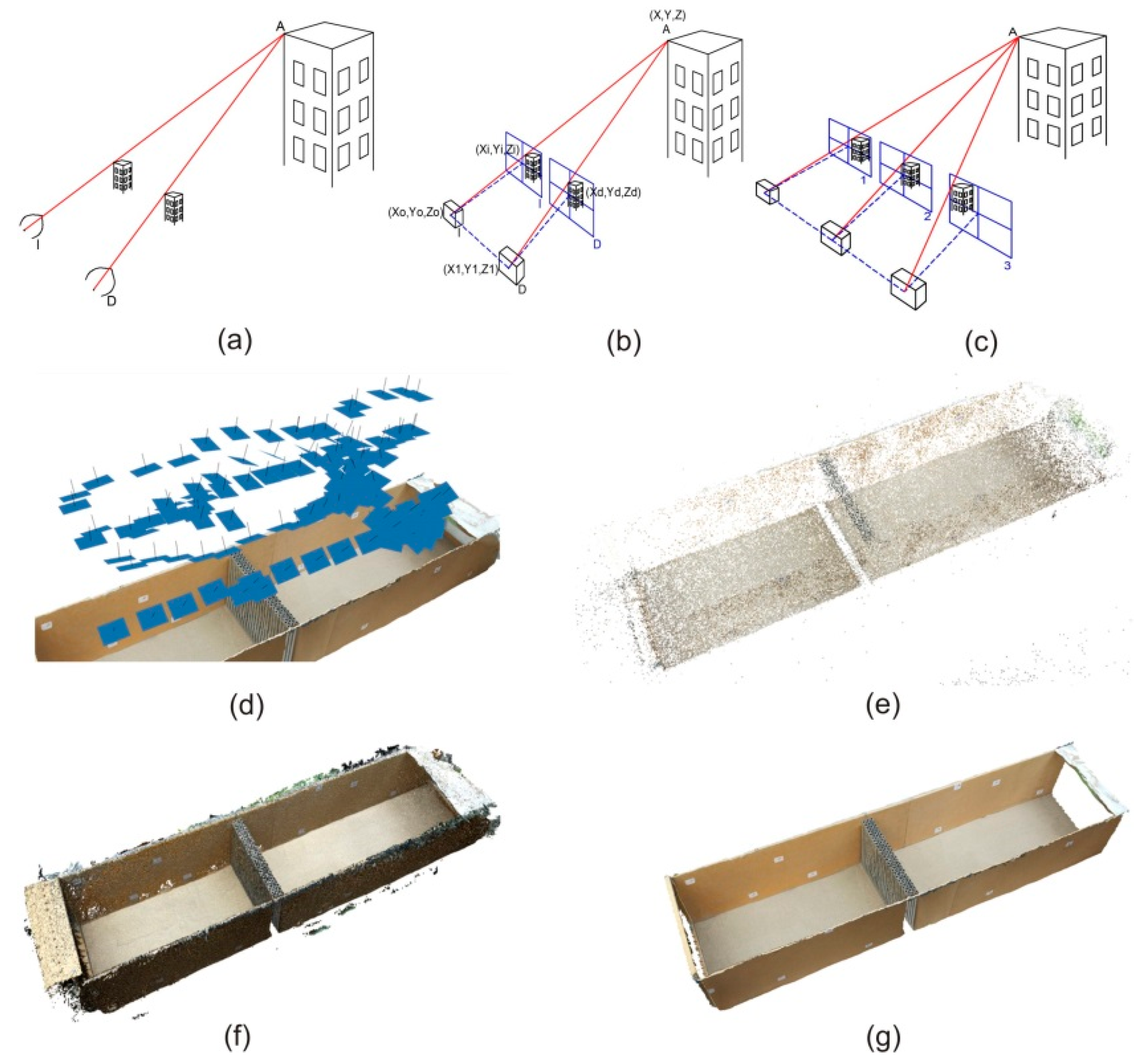


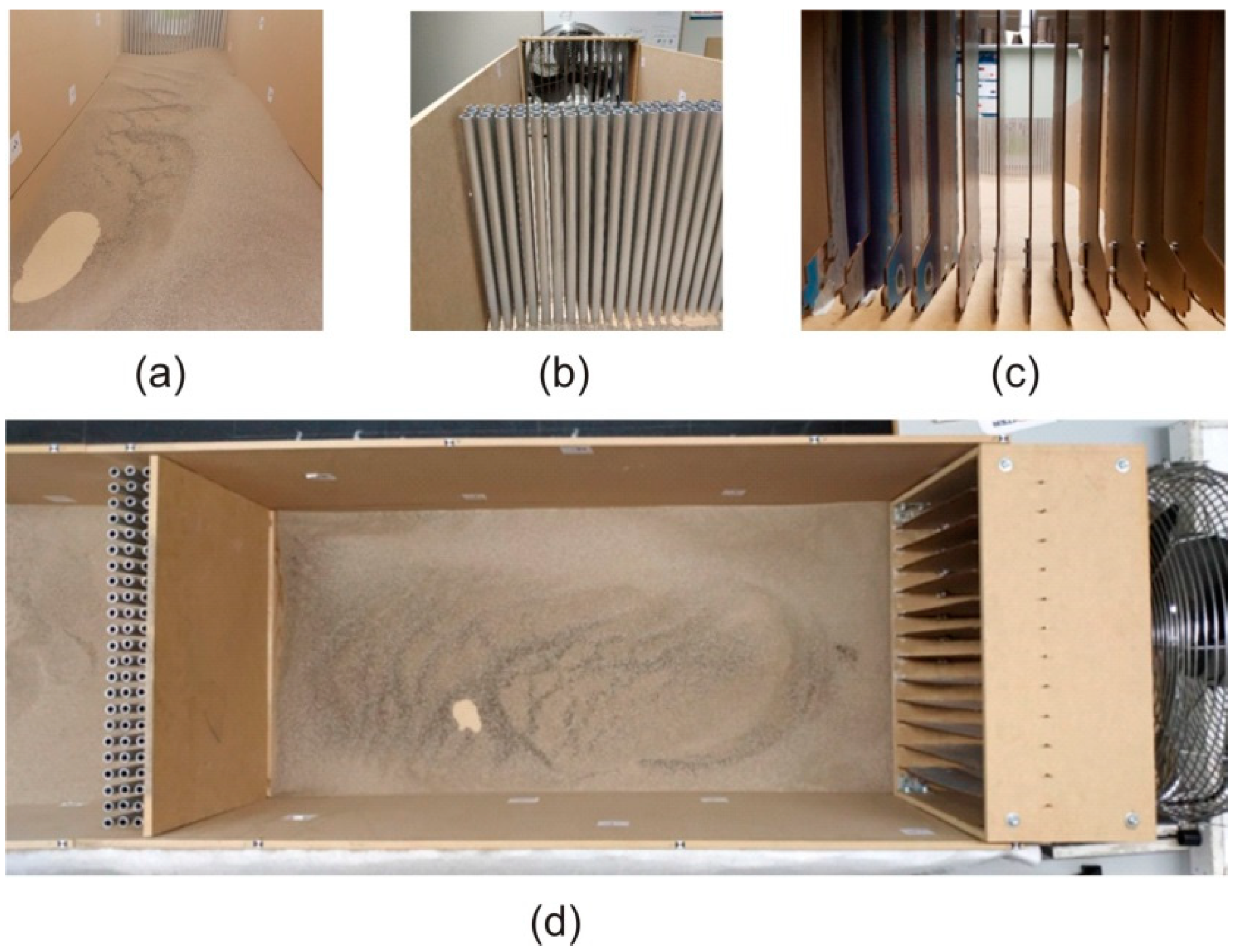
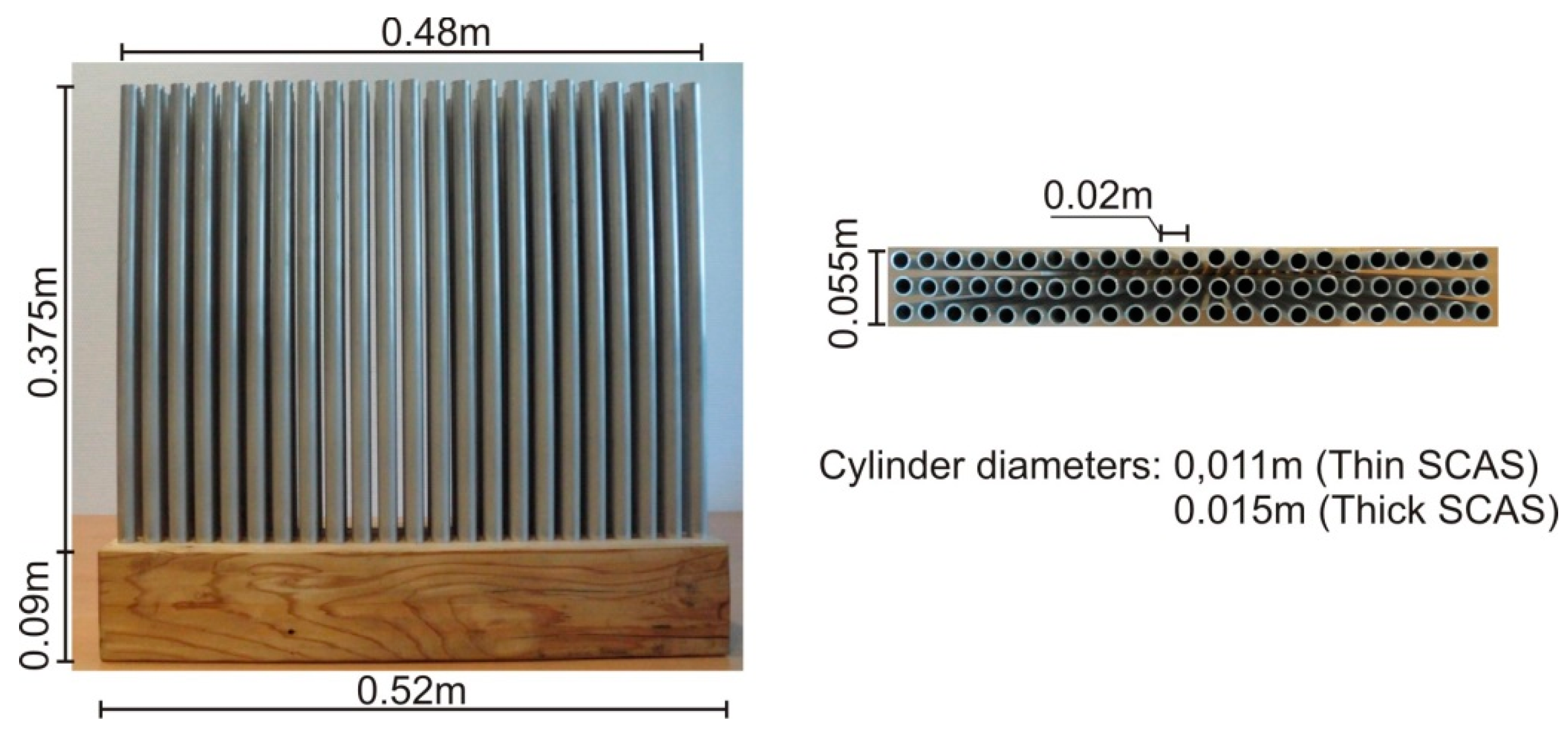
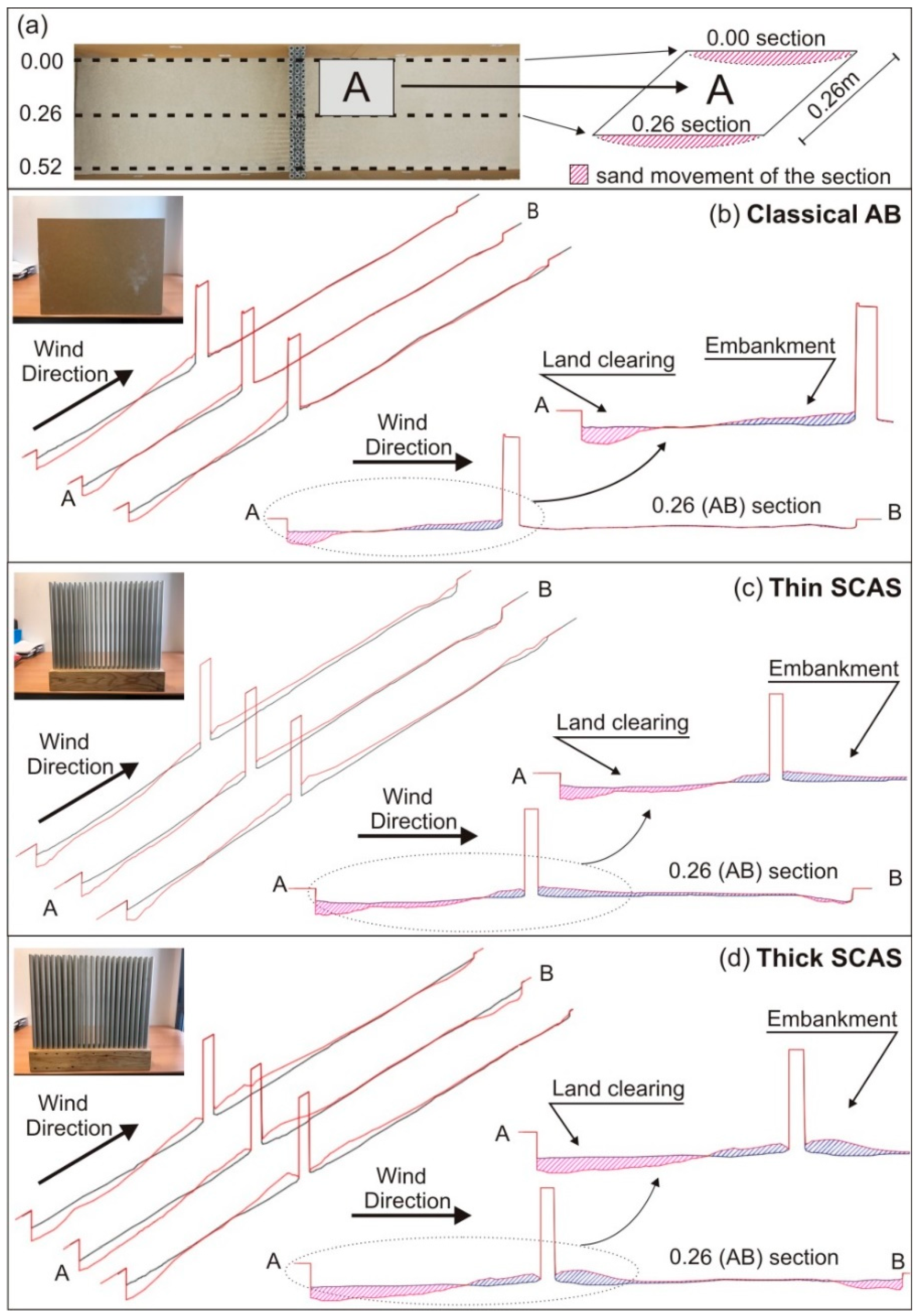

| Name | Scaling Factor | Bragg Frequency (Hz) | Lattice Constant (cm) | Tube Diameter (cm) |
|---|---|---|---|---|
| Thin SCAS | 1:8 | 8000 | 2.125 | 1.2 |
| Thick SCAS | 1:8 | 8000 | 2.125 | 1.6 |
| Name | Image | Features |
|---|---|---|
| Loudspeakers | 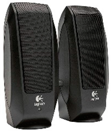 | Total Watt (RMS): 2.2 W |
| Condenser microphone |  | Prepolarized Nominal Sensitivity 6 mV/Pa Frequency Response 10–20,000 Hz Class 1 |
| Soundcard |  | XLR Inputs Signal to Noise Ratio: 97 dB THD+N: 0.005% Freq. Response: ±0.35 dB |
| Software Cool Edit 2000 |  | Record signal Manipulating signal Mix signal |
| Volumes (m3) | |||||
|---|---|---|---|---|---|
| Front Part of the AB | Back Part of the AB | ||||
| Profiles | Clearing | Embankment | Clearing | Embankment | |
| Classic AB | 0.00–0.26 | 0.0030 | 0.0031 | 0.0008 | 0.0004 |
| 0.26–0.52 | 0.0038 | 0.0027 | 0.0000 | 0.0004 | |
| Scale 1:8 | 0.0068 | 0.0057 | 0.0008 | 0.0008 | |
| Scale 1:1 | 0.0136 | 0.0114 | 0.0017 | 0.0016 | |
| Thin SCAS | 0.00–0.26 | 0.0035 | 0.0018 | 0.0003 | 0.0067 |
| 0.26–0.52 | 0.0088 | 0.0016 | 0.0010 | 0.0033 | |
| Scale 1:8 | 0.0123 | 0.0034 | 0.0012 | 0.0100 | |
| Scale 1:1 | 0.0246 | 0.0068 | 0.0025 | 0.0200 | |
| Thick SCAS | 0.00–0.26 | 0.0051 | 0.0026 | 0.0010 | 0.0058 |
| 0.26–0.52 | 0.0065 | 0.0022 | 0.0015 | 0.0055 | |
| Scale 1:8 | 0.0116 | 0.0047 | 0.0024 | 0.0113 | |
| Scale 1:1 | 0.0231 | 0.095 | 0.0049 | 0.0226 | |
© 2019 by the authors. Licensee MDPI, Basel, Switzerland. This article is an open access article distributed under the terms and conditions of the Creative Commons Attribution (CC BY) license (http://creativecommons.org/licenses/by/4.0/).
Share and Cite
Bravo, J.M.; Buchón-Moragues, F.; Redondo, J.; Ferri, M.; Sánchez-Pérez, J.V. Integrated Photogrammetric-Acoustic Technique for Qualitative Analysis of the Performance of Acoustic Screens in Sandy Soils. Sensors 2019, 19, 4881. https://doi.org/10.3390/s19224881
Bravo JM, Buchón-Moragues F, Redondo J, Ferri M, Sánchez-Pérez JV. Integrated Photogrammetric-Acoustic Technique for Qualitative Analysis of the Performance of Acoustic Screens in Sandy Soils. Sensors. 2019; 19(22):4881. https://doi.org/10.3390/s19224881
Chicago/Turabian StyleBravo, José M., Fernando Buchón-Moragues, Javier Redondo, Marcelino Ferri, and Juan V. Sánchez-Pérez. 2019. "Integrated Photogrammetric-Acoustic Technique for Qualitative Analysis of the Performance of Acoustic Screens in Sandy Soils" Sensors 19, no. 22: 4881. https://doi.org/10.3390/s19224881
APA StyleBravo, J. M., Buchón-Moragues, F., Redondo, J., Ferri, M., & Sánchez-Pérez, J. V. (2019). Integrated Photogrammetric-Acoustic Technique for Qualitative Analysis of the Performance of Acoustic Screens in Sandy Soils. Sensors, 19(22), 4881. https://doi.org/10.3390/s19224881





